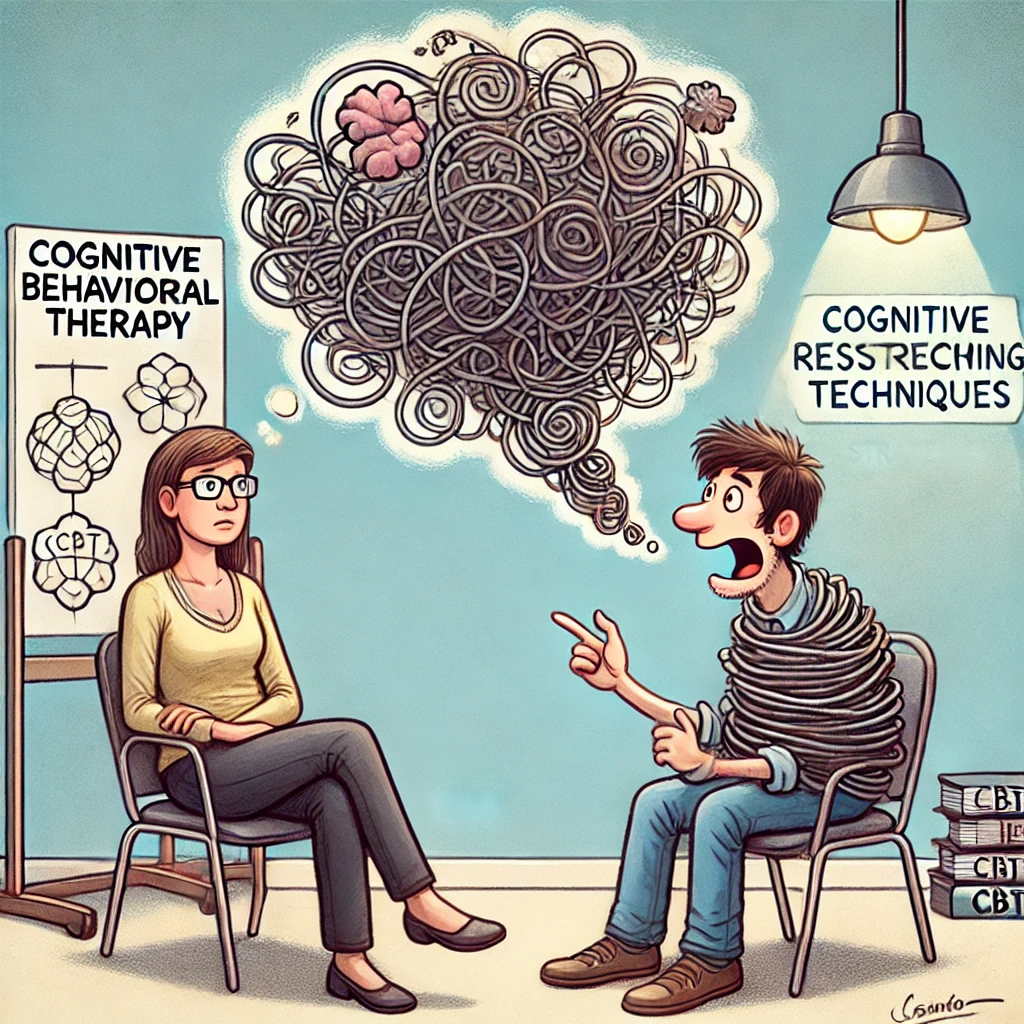Cognitive Behavioral Therapy (CBT): The Mental Gym for Overthinkers

Cognitive Behavioral Therapy (CBT) is the psychological equivalent of taking your brain to the gym—except instead of lifting weights, you’re lifting all the emotional baggage you’ve been hoarding since childhood. It’s one of the most popular and effective therapy methods for treating everything from anxiety and depression to Why did I say that embarrassing thing in 2013? syndrome.
What is Cognitive Behavioral Therapy?
Cognitive Behavioral Therapy (CBT) is a structured, goal-oriented form of psychotherapy that helps individuals identify and challenge negative thought patterns. Rather than dwelling on the past, CBT focuses on changing current thinking and behaviors to improve emotional well-being.
It is widely used to treat conditions such as anxiety, depression, PTSD, OCD, and phobias. Unlike traditional talk therapy, CBT is more interactive and includes homework assignments, exercises, and structured sessions—yes, therapy with pop quizzes.
How Does CBT Work?
CBT operates on the core principle that thoughts, emotions, and behaviors are all connected. Here’s a breakdown of what that means in real life:
You have a thought: “I’m terrible at my job.”
That thought causes a feeling: Anxiety, self-doubt, existential dread.
That feeling leads to an action: You procrastinate, over-apologize, or spend 30 minutes staring at your screen questioning every life choice.
CBT steps in like a tough-love therapist and says, “Hey, let’s stop that spiral right now.”
Techniques Used in CBT
CBT isn’t just about chatting—it’s about doing. Some of the classic techniques include:
Cognitive Restructuring – Identify and challenge irrational or unhelpful thoughts. (No, Linda from HR is not plotting against you.)
Exposure Therapy – Gradually facing fears in a controlled setting. (Like finally opening that email from two weeks ago.)
Behavioral Activation – Doing things even when you don’t feel like it. (Yes, leaving your house counts as a win.)
Journaling & Thought Records – Writing down intrusive thoughts and challenging them logically. (Dear Diary, am I really a failure, or did I just forget to reply to one email?)
Relaxation Techniques – Breathing exercises, progressive muscle relaxation, and mindfulness to calm the storm inside your brain.
What Conditions Does CBT Treat?
CBT is highly versatile and is effective in treating various mental health conditions, including:
Anxiety Disorders – Generalized anxiety, social anxiety, and the art of worrying about literally everything.
Depression – Challenging the thoughts that keep you stuck in a sad, unmotivated loop.
Obsessive-Compulsive Disorder (OCD) – Managing intrusive thoughts and breaking compulsive cycles.
Post-Traumatic Stress Disorder (PTSD) – Processing traumatic memories and reducing their grip on daily life.
Phobias – Facing fears one small step at a time. (No, spiders don’t have a personal vendetta against you.)
Frequently Asked Questions about CBT
What is CBT used for?
How long does CBT take to work?
Is CBT just positive thinking?
Can I do CBT on myself?
What is the success rate of CBT?
Is CBT effective for children and teenagers?
Final Thoughts
CBT isn’t just therapy—it’s mental self-defense. It gives you tools to challenge those irrational thoughts, break toxic cycles, and take control of your emotional responses. While it won’t make life perfect (because let’s be honest, nothing will), it will make you better equipped to handle the curveballs life throws your way. If you’re tired of your own brain’s nonsense, CBT might just be the upgrade you need.
For more resources and insights, visit the best resource in health.
